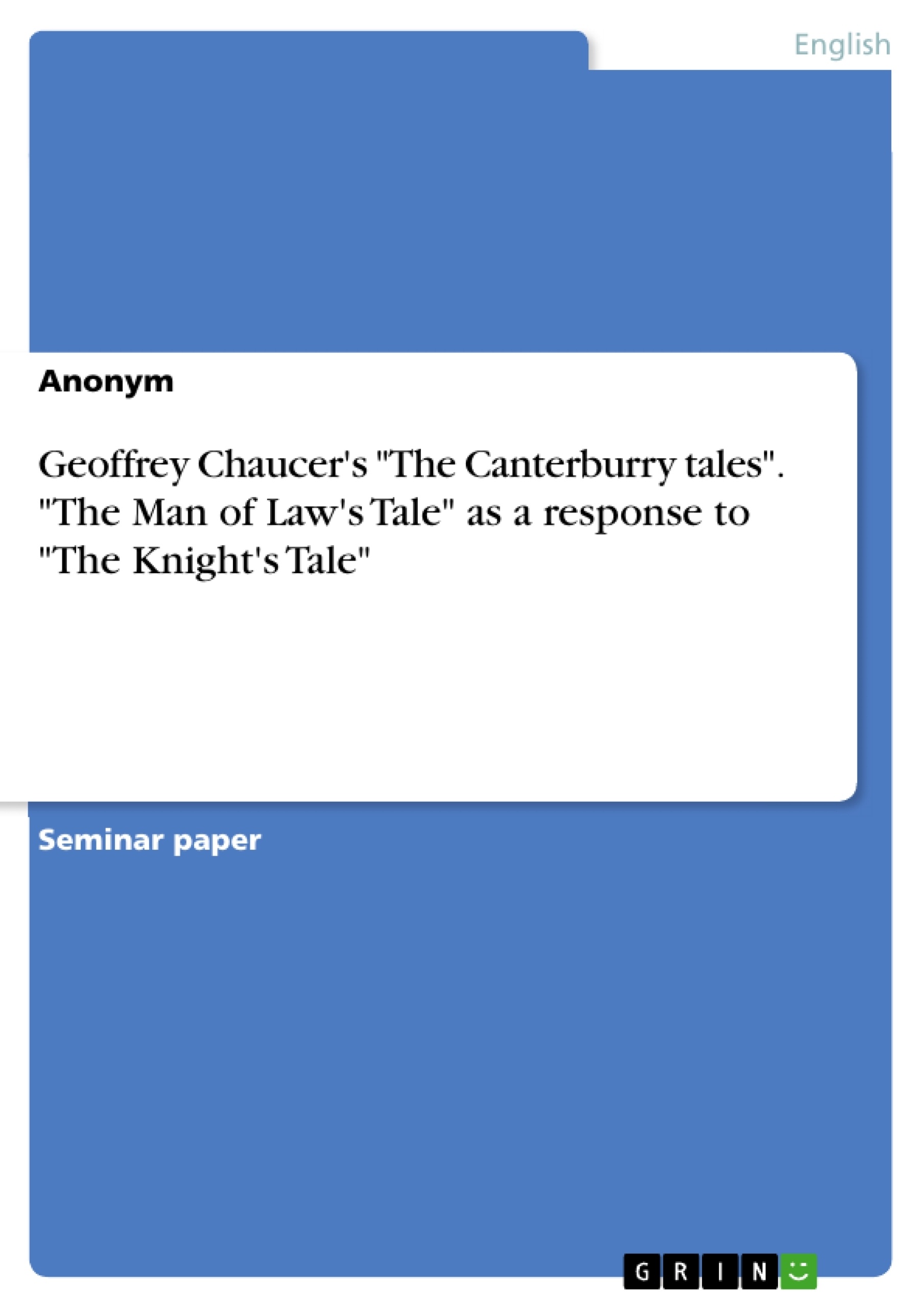At a first glance, "The Knight’s Tale" and "The Man of Law’s Tale" seem to have very few in common. Yes, both are romance adaptations of other works, the Teseida and the Chronique and Confessio amantis respectively, but not much more (unlike "The Miller’s Tale", which obviously answers to "The Knight’s story of chivalry and gallantry").
However, when digging deeper, one soon finds more to discuss and analyze than one might have expected: Both narrators are members of the upper class of society, both tales deal with marriage, love, and the hard way of reaching the two, both tales present us with a clear view on religion, and "The Knight’s Tale" as well as "The Man of Law’s Tale" have prominent female characters, allowing us an insight into the narrators’ view on women. All these aspects not only make an in depth comparison of the two tales necessary to understand the Canterbury Tales and its composition better, but it is also interesting, as it permits us to enter the fictitious minds of both the Knight and the Man of Law. Through comparison single features that might have been missed when investigating only one story get emphasized, giving us a whole new view on the two tales.
The main aspects, or themes, that will be analyzed in the course of this paper are the narrators themselves, their characters, reliabilities, and involvement with their stories, the worldview they transmit, or try to transmit via their tales, the role of love and women in the romances, and finally how religion influences the worlds the Knight and the Man of Law describe. Beforehand however a short general analysis of the two tales will be given, discussing their form and origin, as well as place in the frame narrative, which is, from the author’s point of view, necessary to fully understand the following chapters. Finally, a short conclusion will be given, as well as a list of sources that were used to aid in the writing of this paper.
Table of Contents:
Introduction
I. General Analysis
I.1. The Knight ’ s Tale
I.1.1. Position in the Canterbury Tales
I.1.2. Style
I.1.3. Origin of The Knight ’ s Tale
I.2. The Man of Law ’ s Tale
I.2.1. Position in the Canterbury Tales
I.2.2. Style
I.2.3. Origin of The Man of Law ’ s Tale
II. Comparison of the Two Tales
II.1. The Narrators
II.2. Implied Worldview
II.3. Representation of Women and Love
II.4. Representation of Religion
III. Conclusion
Bibliography
- Quote paper
- Anonymous,, 2012, Geoffrey Chaucer's "The Canterburry tales". "The Man of Law's Tale" as a response to "The Knight's Tale", Munich, GRIN Verlag, https://www.grin.com/document/418136
-

-

-

-
Upload your own papers! Earn money and win an iPhone X. -

-
Upload your own papers! Earn money and win an iPhone X. -

-
Upload your own papers! Earn money and win an iPhone X. -

-
Upload your own papers! Earn money and win an iPhone X. -

-
Upload your own papers! Earn money and win an iPhone X. -

-
Upload your own papers! Earn money and win an iPhone X.

